Somalis fleeing war and drought swell refugee camp at Dadaab, Kenya
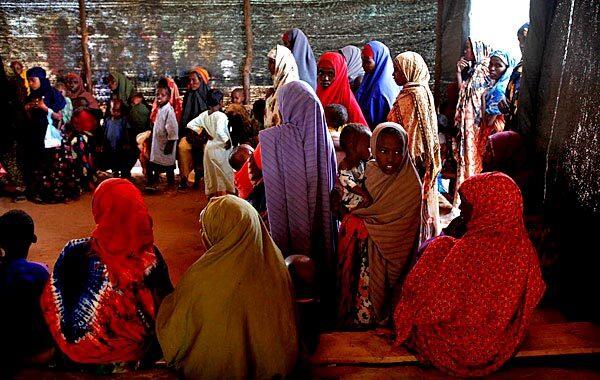
Somali refugees hold their children as they wait to be seen at one of the five health stations run by the Doctors Without Borders aid group in the Dadaab camp. Every day, more than 1,000 refugees arrive at the camp gates. (Barbara Davidson / Los Angeles Times)
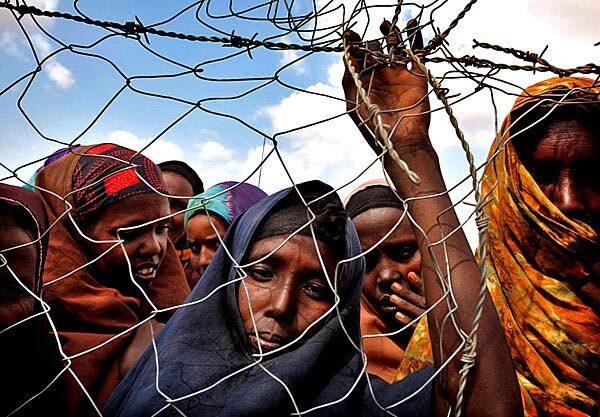
Somali refugees wait to be registered at Camp IFO on the outskirts of Dadaab, Kenya. They are hoping for an open spot at the world’s largest refugee complex. The worst drought in decades has blistered large parts of the Horn of Africa, turning it into a hellscape of deserted villages and dead rivers. The
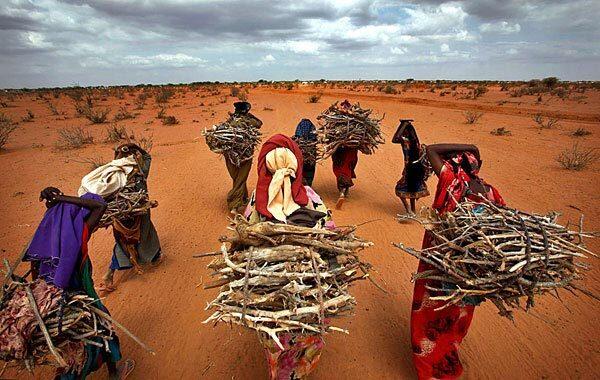
Women venture to the camp outskirts to forage for firewood, and return bowed under the bundles lashed to their backs. (Barbara Davidson / Los Angeles Times)
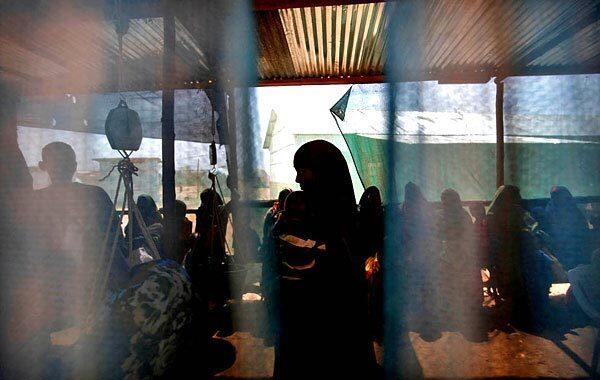
A Somali refugee holds her child as she waits to see medical volunteers. (Barbara Davidson / Los Angeles Times)
Advertisement
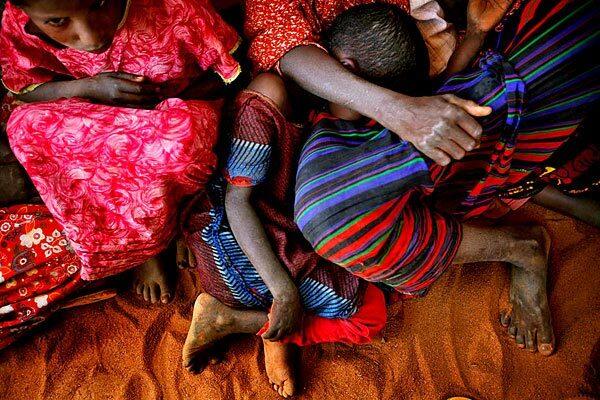
The Dadaab refugee complex in northeastern Kenya, a 19-square-mile sprawl, was created in the early 1990s to accommodate refugees fleeing political chaos in Somalia. It now holds 372,000 people, more than four times its original capacity. (Barbara Davidson / Los Angeles Times)
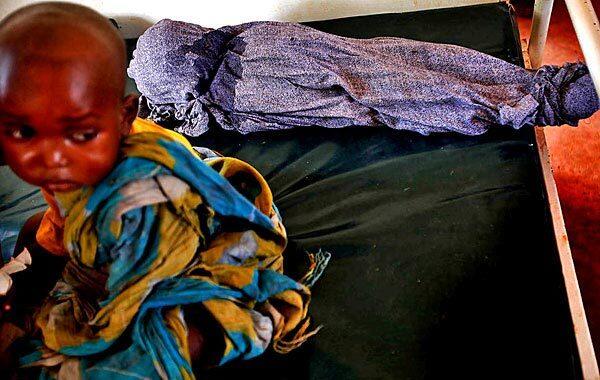
A child in the camp sits next to the body of another. The flood of refugees has created a backlog of 17,000 people and growing, who can languish for months before they are registered at the camp, aid officials say. The vast majority of new arrivals are women and children, as men stay behind with the dying livestock, trying to protect the precarious family wealth. (Barbara Davidson / Los Angeles Times)
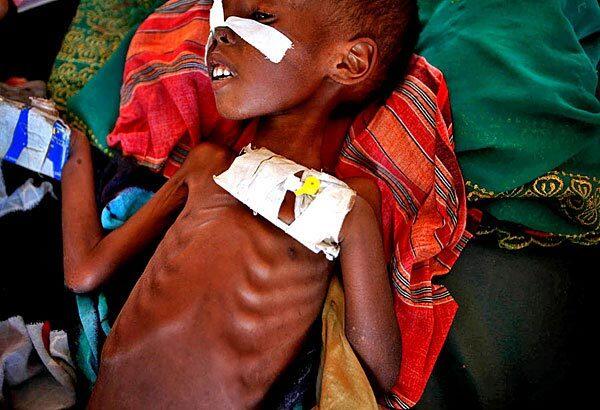
Habido Sharif Hassan, 2 years old and severely malnourished, lies inside a
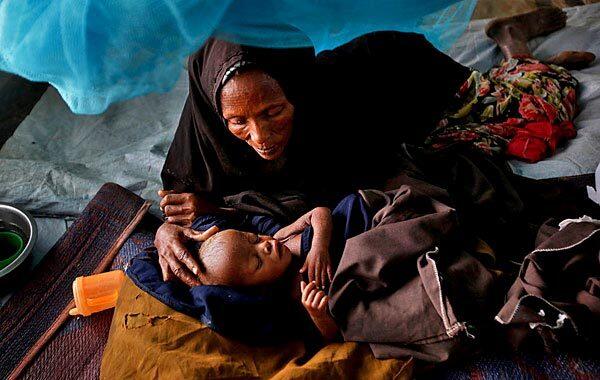
Hawa Barre Osman looks for a sign of life from Abdi Noor Ibrahim, her severely malnourished 1-year-old, inside the Doctors Without Borders therapeutic feeding center at the Dadaab complex. She walked for a month with her five children from Somalia to reach the camp. (Barbara Davidson / Los Angeles Times)
Advertisement
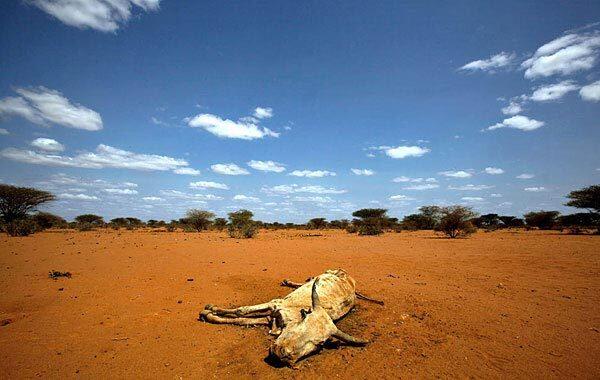
Livestock have become emaciated and then died in the prolonged drought. (Barbara Davidson / Los Angeles Times)



